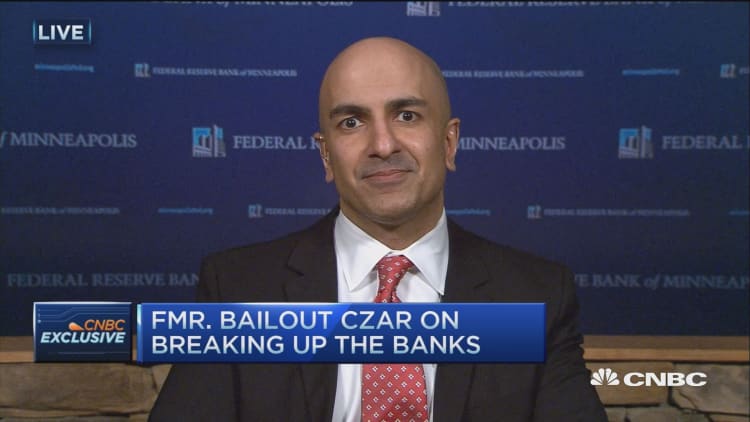

Despite concerns about the safety of U.S. banks, they're the strongest they've been in decades, storied bank analyst Richard Bove told CNBC's Squawk Box.
"They do have the protections that basically other people seem to want them to have," said Bove, an equity analyst at Rafferty Capital Markets. "If you take a look at their capital as a percentage of assets, you have to go back to 1938 during the bank holiday to find banks in stronger condition."
In 1938, the U.S. Congress declared a federal holiday for November 11 to commemorate the close of World War I with a national peace holiday.
"If you take any ratio that you want to take concerning loans vs capital, loans versus liquidity, these companies are in much stronger condition than they've been in decades," Bove said.
Bove is famed for calling a housing bubble in 2005, before the onset of the mortgage crisis in 2007-2008, although he also issued a wrong-way buy call on the banking sector in 2008 in the aftermath of the collapse of Bear Stearns.
His current call on the health of banks comes even as he expects loan losses to rise.
"They (loan losses) have to go up. There's no way possible they're going to stay as low as they are," he said, noting that the third quarter of 2013 saw the lowest loan loss rate ever in recorded numbers as a percentage of loans.
"But having said they're going to go up, recognize that they're not going to get back to average. In other words, it's going to go up, it's going to impact the earnings of the banks in a negative fashion, but it's an absorbable increase."
Bove is also well-known for being opposed to further regulation of the banks, something that's become closely watched as U.S. banks Tuesday were required to deliver their submissions to the U.S. Federal Reserve for the annual "stress test" of how banks would weather hypothetical scenarios of difficult market conditions.
Bove's comments come as policymakers remain concerned about the health of the sector.
Neel Kashkari, president of the Minneapolis Federal Reserve, told CNBC that he was still concerned about the sector and what regulatory changes might still be needed in the wake of the Global Financial Crisis.
"I just don't want the American people to have a false sense of security that we've addressed too big to fail, that this can't happen again. I think some of those risks remain," Kashkari said.
But Bove said one of the Fed's concerns on display in the latest stress tests -- how banks would handle a negative interest rate scenario of a couple years' duration -- doesn't seem very likely.
"I see no reason why they would put negative interest rates in place," he told CNBC. "No one has seen negative interest rates show any major improvement in the economies where they've been put in place."
Bove said markets are in fact in a Keynesian "liquidity trap," where monetary policy becomes ineffective as interest rates remain low, a policy which theoretically should spur spending, but instead pushes up savings rates.
Some in the markets have been concerned the U.S. might follow the Bank of Japan, the European Central Bank and several other central banks into a negative interest rate policy after Fed chief Janet Yellen declined to rule it out in testimony to Congress in February.
But on the more near-term issue of whether the Fed will hike interest rates, Bove is unconcerned, calling market concerns "balderdash."
He noted that the federal funds rate, or the interest rate which banks pay on loans from other banks, has already risen. From 2011 through late 2015, that rate was below 15 basis points, but since November, it's more than doubled to around 37-38 basis points, he said.
That's led to an increase in banks' net interest margins in 2015, a trend that likely continued in the first quarter of this year as well, he said. That's a positive for banks' profits.
Follow CNBC International on Twitter and Facebook.
—By CNBC.Com's Leslie Shaffer; Follow her on Twitter @LeslieShaffer1


